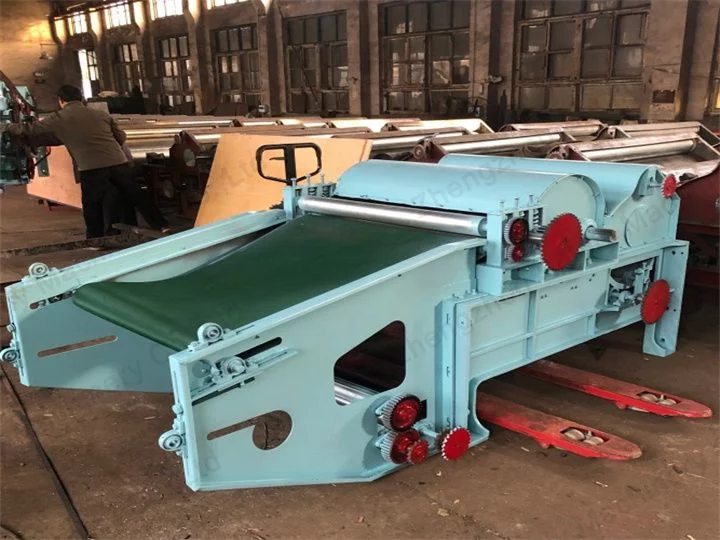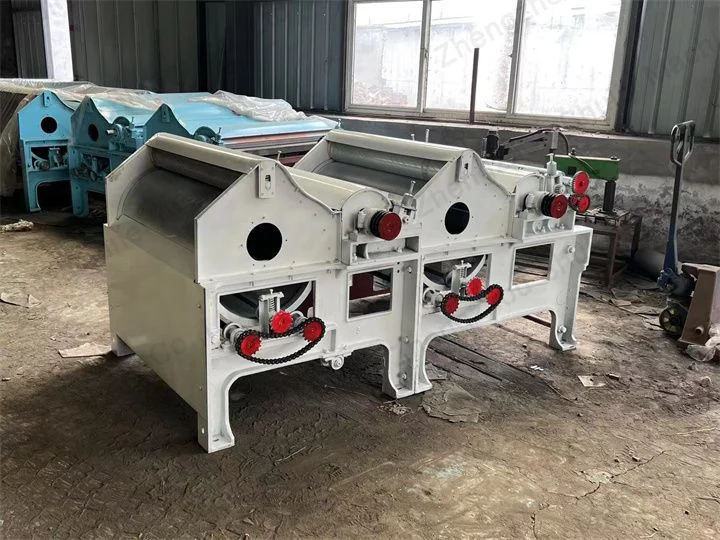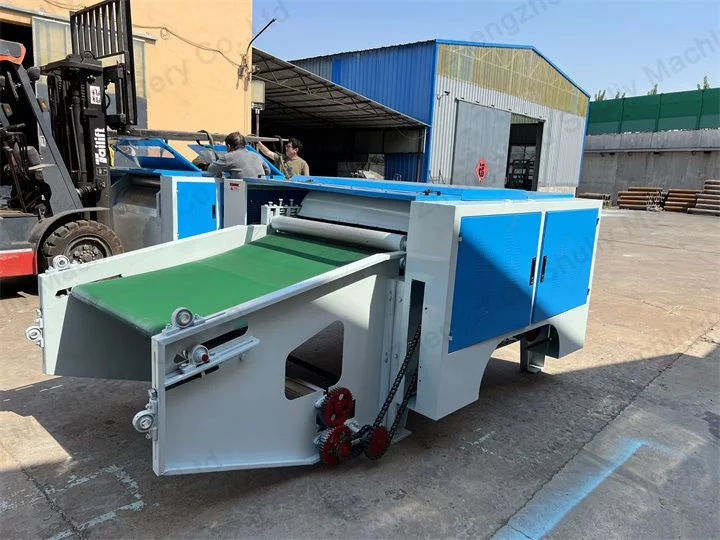
How to Properly Maintain a Fibre Opener?
Fibre openers are mainly used to loosen fibers, cotton, textiles, and other materials. Through tearing, the large tangled fiber loosens into small pieces or bundles. At the same time the fiber loosening machine in the process of loosening accompanied by mixing, in addition to the role of impurities. The fiber opening machine generally consists of a pair of feeding rollers or feeding rollers and an opening in the forest. The fiber openers are equipped with corner nails or card needles. The different structure makes the opening effect, mixing effect, and the effect of removing impurities have obvious differences. Therefore, different requirements of the fiber recycling line should be used in different forms of openers.

Maintenance of Fibre Openers
Clean the Whole Fibre Opener
- Open the protective cover outside the pressure gauge of the fiber opening machine. Then open the control box to clean the whole machine. Blow off the flocculent fibers in the electromagnetic clutch (this is the key cause of fire accidents). Wipe off any oil stains around the pedal box. Clean the fiber fragments in the control box.
- Loosen the warp and remove the burrs under the healds and the chest beam. Excessive flotsam on the bottom of the chest beam can damage the air hose of the auxiliary nozzle. Too much fluff under the steel box can easily cause damage to the box path.
- Blow out the flotsam under the frame hinges. Clean the oil under the fabric rollers. Blow off the hair on the side of the warp feed motor.
- Clean the weft storage device: Clean the material in the winding reel and the floating material around the tensioner.
- Clean the belt selvage grinder of the opener. Cleaning of the head of the belt grinder is the key to reduce the defects of burlap. So users should clean this part regularly.

Checking the Yarn Loom Device and Tension Device
- Remove dust and flotsam from the edges of the Leno roller and between the sliders.
- Check the guide pins and yarn guides and keep them smooth.
- Check that the hinge edges are working.
- Check that the tension proximity switch and damper are working and that the screws are not loose.
Check the side braces
- If the condition permits, it is necessary to use side braces.
- Remove the side braces and carefully inspect the teeth of the side braces for bending or damage.
- Check that the teeth of the side brace are flexible and remove the ring from the teeth.
- Check the two nylon rings carefully for wear. This is because damaged nylon rings not only reduce the support effect but also produce wear marks on the fabric surface.
- The assembly specifications of the side braces should be strict. In particular, the fabric edge at the side support, the warp at the edge of the steel frame, and the warp at the edge of the heald frame should become a straight line. This is because of the high friction formed by the high speed of the loom. If the assembly position of the side supports is not standardized it can lead to edge defects. In severe cases, they tend to wear out the steel boxes.
It is recommended that the operator of the open loom carries out cleaning work on the entire machine after use, and not only needs to test the leno device and the tension device but also needs to overhaul the customized side supports.
